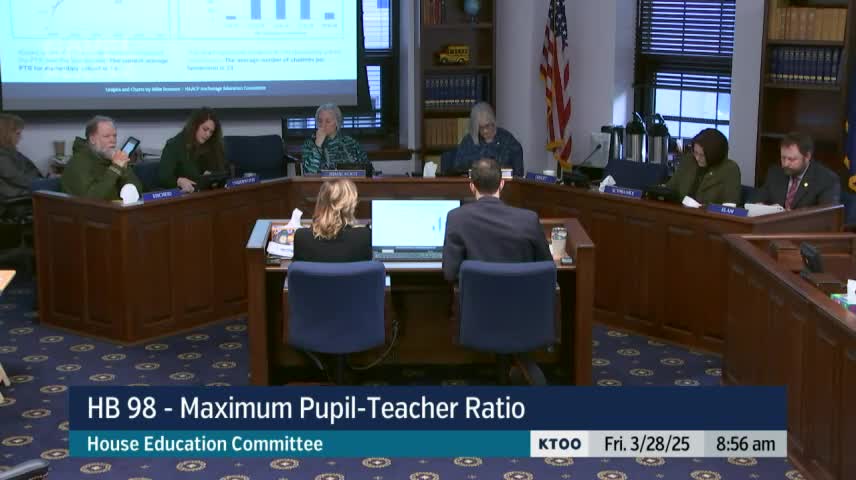Alaska House Education Committee discusses class size impacts on student achievement
March 28, 2025 | 2025 Legislature Alaska, Alaska
This article was created by AI summarizing key points discussed. AI makes mistakes, so for full details and context, please refer to the video of the full meeting. Please report any errors so we can fix them. Report an error »

In a recent meeting of the Alaska House Education Committee, discussions centered on the implications of class size on student achievement, particularly in larger school districts. The meeting highlighted the challenges faced by educators and the need for legislative support to address overcrowded classrooms.
One of the key topics was the proposed bill that would set maximum class sizes, specifically targeting districts with an average daily membership of 35,000 students or more. Lawmakers expressed support for the bill, emphasizing the importance of understanding community needs, particularly in areas like the Mat Su Valley, where class sizes have become a pressing concern.
Rabbi Scheid raised critical questions about the correlation between class size and student achievement, noting that while smaller classes are often perceived as beneficial, the variability in class sizes within schools can significantly impact learning outcomes. He referenced studies, including the Tennessee STAR study, which suggest that optimal class sizes for high student achievement are around 15 students for early grades. This aligns with broader discussions about the adequacy of funding for education in Alaska, where many districts struggle with overcrowded classrooms.
Testimonies from educators underscored the real-world implications of class size on teaching effectiveness. Tom Claymeier, president of the National Education Association Alaska, shared insights from teachers experiencing overcrowded classrooms, highlighting the urgent need for legislative action to improve learning environments. He pointed out that while class size is a critical factor, the overall context of students' lives—such as their home environments and personal challenges—also plays a significant role in educational outcomes.
The committee's discussions reflect a growing recognition of the need to balance class sizes with the diverse needs of students. As lawmakers consider the proposed bill, the focus remains on ensuring that all students have access to quality education, which is increasingly seen as a fundamental right in Alaska. The meeting concluded with a commitment to further explore the complexities of class size and its impact on student success, setting the stage for future legislative efforts aimed at improving educational standards across the state.
One of the key topics was the proposed bill that would set maximum class sizes, specifically targeting districts with an average daily membership of 35,000 students or more. Lawmakers expressed support for the bill, emphasizing the importance of understanding community needs, particularly in areas like the Mat Su Valley, where class sizes have become a pressing concern.
Rabbi Scheid raised critical questions about the correlation between class size and student achievement, noting that while smaller classes are often perceived as beneficial, the variability in class sizes within schools can significantly impact learning outcomes. He referenced studies, including the Tennessee STAR study, which suggest that optimal class sizes for high student achievement are around 15 students for early grades. This aligns with broader discussions about the adequacy of funding for education in Alaska, where many districts struggle with overcrowded classrooms.
Testimonies from educators underscored the real-world implications of class size on teaching effectiveness. Tom Claymeier, president of the National Education Association Alaska, shared insights from teachers experiencing overcrowded classrooms, highlighting the urgent need for legislative action to improve learning environments. He pointed out that while class size is a critical factor, the overall context of students' lives—such as their home environments and personal challenges—also plays a significant role in educational outcomes.
The committee's discussions reflect a growing recognition of the need to balance class sizes with the diverse needs of students. As lawmakers consider the proposed bill, the focus remains on ensuring that all students have access to quality education, which is increasingly seen as a fundamental right in Alaska. The meeting concluded with a commitment to further explore the complexities of class size and its impact on student success, setting the stage for future legislative efforts aimed at improving educational standards across the state.
View full meeting
This article is based on a recent meeting—watch the full video and explore the complete transcript for deeper insights into the discussion.
View full meeting
